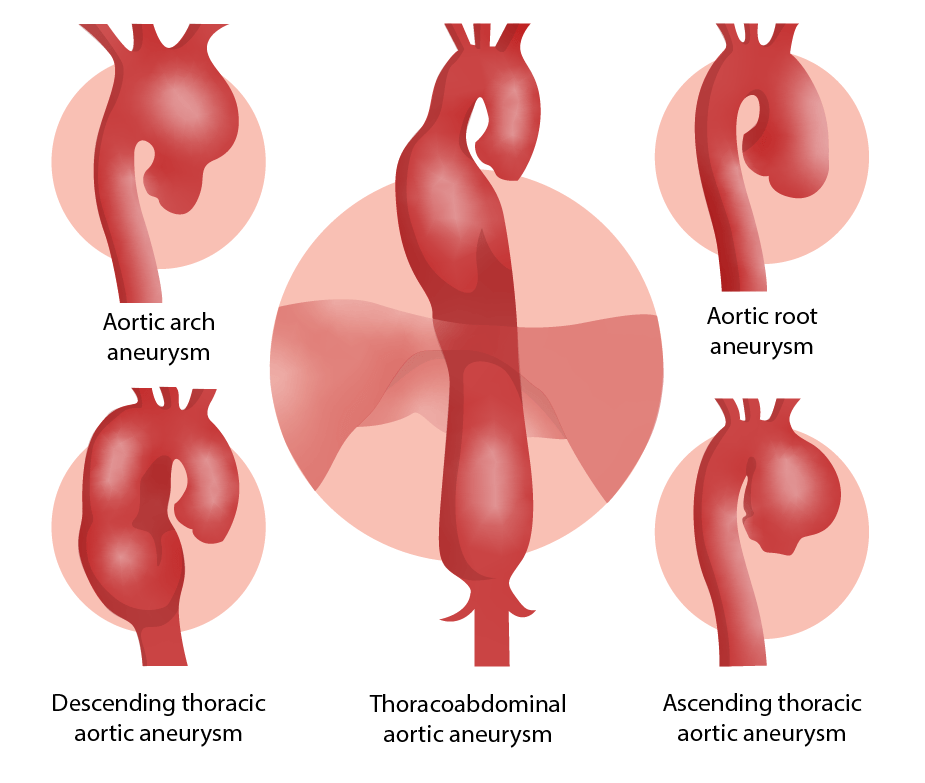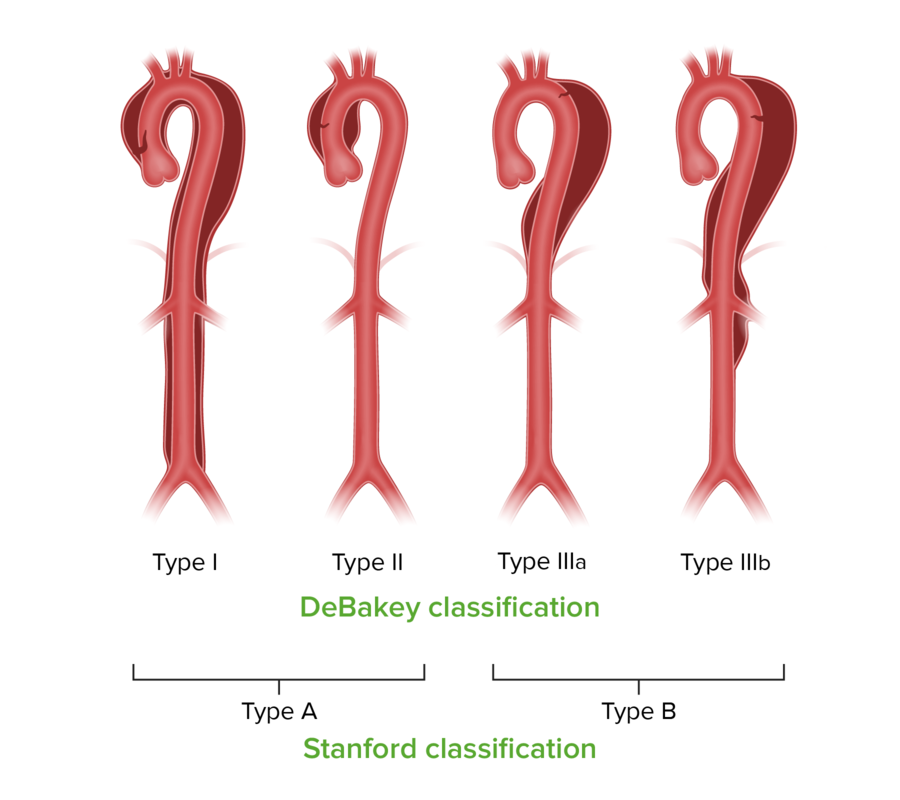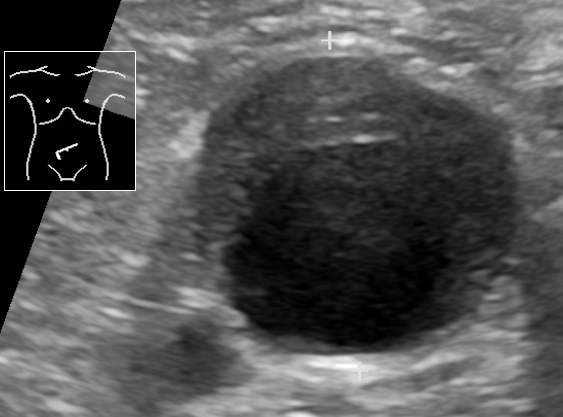Playlist
Show Playlist
Hide Playlist
Introduction to Aortic Aneurysm and Dissection
-
Slides Aortic Disease.pdf
-
Download Lecture Overview
00:01 Welcome. 00:02 We're going to talk about an important and sometimes catastrophic occurrence that happens within the aorta. 00:09 This is aortic dissection. 00:11 And often the predecessor to that is aortic aneurysm dilation of the aorta. 00:17 In order to really understand how this happens the aorta and the various causes, we have to go back to the normal structure and function of the aorta. 00:26 So this is our typical artery. 00:30 But now we're going to expand the media in particular because that's the most important part of the aortic architecture. 00:38 So imagine this is an aorta, you have endothelium that's identified there, sits on a basement membrane, basal lamina, whatever, there is an internal elastic membrane, and then there is a very thick, smooth muscle media. 00:52 The smooth muscle media in the aorta has a very high elastic tissue content, and a very high extracellular matrix content collagens type l and lll, that's because the aorta is a high-pressure organ, a high-pressure artery, and has to hold up pretty well to 120 mm of mercury peak systole. 01:16 It also has to have recoil. 01:18 So when blood flows out at 120 mm of mercury, a nice healthy aorta, because the elastic tissue content is able to slightly ever so slightly dilate, but then recover that volume and pressure and squeeze it during diastole. 01:36 And that ability to recoil is all due to the elastic tissue. 01:41 There's an external elastic membrane that is variable, but it can be recognizable, and that will between the internal elastic membrane and the external elastic membrane, we'll have our media. 01:53 And then outside of that are going to be the vessels of the of the aorta, the vasa vasorum. 02:00 So vessels of the vessel that are part and parcel of the adventitia. 02:05 Those vessels of the vasa vasorum are particularly important in the aorta, because the media is very thick. 02:14 And we cannot maintain that aortic media just by simple diffusion from the lumen of the aorta. 02:23 Let's look at this in a slightly different way. 02:24 So this is in a cross section. 02:28 And again, going from the inside, which is the lower right hand corner to the outside, which is the upper left hand corner. 02:34 We have an endothelium sitting on a basal membrane, internal elastic membrane. 02:39 And then we have this very thick walled media with lots and lots and lots of smooth muscle cells, interspersed with connective tissue, elastic tissue, and type l and type lll collagen for the most part. 02:52 We'll have an external elastic membrane, and then we'll have the adventitia which contain the vessels of the vasa vasorum. 02:58 And you see them as those little red snaky lines that are coming in to the outer 2/3 of the media. 03:06 That is how we perfuse how we maintain the viability of the outer 2/3 of the media. 03:14 The green arrow is indicating the depth by which we can support the medius muscle cells by diffusion just from the lumen. 03:22 And there's clearly a substantial thickness in the media that won't live if we're dependent on just luminal diffusion. 03:30 So that's an important kind of organizational structure, realizing that there is a watershed zone within the media. 03:39 And if we affect the vessels of the vasa vasorum, the outer 2/3 of the media may die. 03:44 If we thicken the intima, we will have a greater diffusion distance in the inner third of the media may die. 03:52 And if we understand that we can understand a lot of the etiologies, the causes the pathogenesis, underlying aortic dissection and aortic aneurysms. 04:02 Alright, let's look more specifically at the smooth muscle cells because it's not just them. They're signalling that regulate the various factors that they're going to secrete the various proteins. 04:14 One of the important extracellular matrix elements is fibrillin. 04:20 So fibrillin is a fibrillar protein, it's rather large, and it has kind of a globular and a fibrillar structure such as indicated there. 04:29 We're just showing that at higher power or at a greater magnification at the top. 04:35 And if we look at the image that's on the bottom, it's going to be those blue little fibrils and interspersed yellow dots that sit between the elastin core and the overlying smooth muscle cells. 04:49 So the pink, elongated things are smooth muscle cells, they are going to be responsible for making all this extracellular matrix. 04:58 And sitting between the elastic core and smooth muscle cells are going to be the fibrillin microfibrils. 05:05 They're going to be a scaffolding upon which we lay down a lot of extracellular matrix, but they're also going to be a regulatory protein that will bind up certain factors that are important for regulating smooth muscle cell function. 05:22 What do I mean by that? Well, so we have our fibrillar microfibrils. 05:26 That's that kind of blue fibrillar thing on top of the elastic core and between it and the smooth muscle cell dotted with a little globular subunits of that protein. 05:40 On the smooth muscle cells, we have TGF-beta receptors. 05:45 TGF-beta stands for transforming growth factor beta, and it's an important cytokine that regulates smooth muscle cell behavior and its synthetic function. 05:58 And too much TGF-beta has an impact on how well the normal architecture of the smooth muscle media is maintained. 06:08 So smooth muscle cells secrete TGF-beta. 06:11 They also have the receptors for TGF-beta. 06:14 This is an autocrine stimulatory loop. 06:19 Collagen is another component that is secreted by the smooth muscle cells and it's type l predominantly but also type lll collagen and to a lesser extent, some of the other collagens. 06:31 So those are all of our players within this media. 06:37 So it's rather complex, just looking at all the different elements.
About the Lecture
The lecture Introduction to Aortic Aneurysm and Dissection by Richard Mitchell, MD, PhD is from the course Aortic Disease.
Included Quiz Questions
Which layer of the thoracic aorta is known for its high extracellular matrix content?
- Media
- Internal elastic membrane
- Basal membrane
- Endothelium
- Exothelium
On a cross section of the aorta, what is the innermost layer?
- Endothelium
- Media
- Basal membrane
- Internal elastic membrane
- External elastic membrane
What supplies blood to the outer portion of the aortic media?
- Vasa vasorum
- Endothelium
- Diffusion from the aorta
- Perforating arteries
- Adventitia
Customer reviews
5,0 of 5 stars
| 5 Stars |
|
5 |
| 4 Stars |
|
0 |
| 3 Stars |
|
0 |
| 2 Stars |
|
0 |
| 1 Star |
|
0 |








